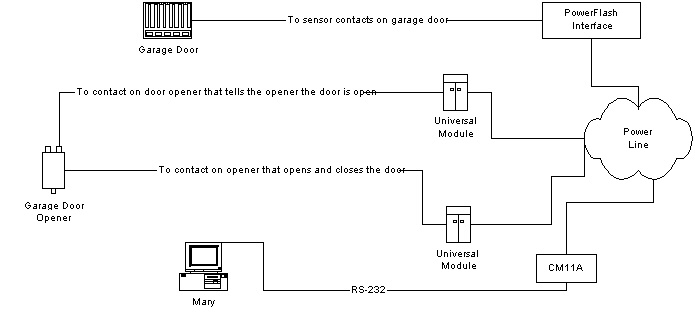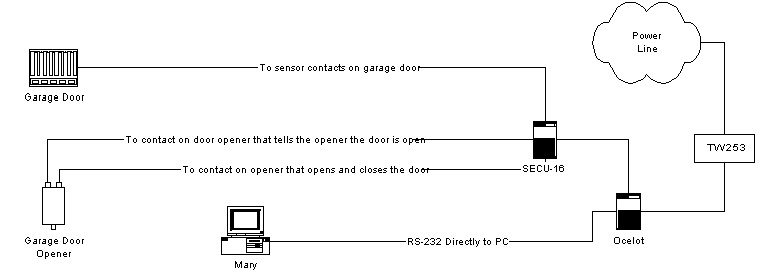
When we first moved into our house, we had a couple of mysterious incidents with our garage door that left us feeling less than secure. Twice, we came home to find the garage door open with at least one of those having a firm memory of closing it. The opener had a key switch next to the garage door and the master control panel had a lock that would inhibit remote controls. I disconnected the key access and locked the door via the master control panel.
This worked for the time but really defeated the reason for having a door opener in the first place. After Mary was up and starting to function with some reliability, I started thinking about what it would take for Mary to control access to the garage door so we could start using the door opener the way it was intended.
The first thing was to find a way to completely inhibit the door from opening. Knowing the logic controlling the door was fairly simple, I removed the cover to see what I could find. The very first thing I noticed was a set of adjustable contacts that controlled where the door stopped. The contacts that interested me were the ones that told the opener that the door was open all the way. If the door opener was being told the door was open, would it lock the door? Not only did it keep the door from opening; it also would stop the door if it was already opening so Mary would be successful in stopping the door and closing it if needs be.
When I installed the sensors for the alarm in the house, I installed a second set of contacts for Mary so she could detect whether the door was closed or open. The rest was performed with an X10 Powerflash interface and two Universal Modules also from X10. Connectivity looks something like this:

Now the possibilities of what you can do with this once it is hooked up is only limited by your creativity. We have 3 major functions Mary takes care of for us where the garage door is concerned:
The problem with this arrangement is X10 isn't the most reliable way to pass contact status change information to the PC. This was a portion of the reason for the upgrade to the Ocelot and SECU-16. The SECU-16 has 8 supervised inputs which are great for security applications and as a result are very reliable. The connectivity changes to look something like this:

The convenience of passing contact status changes through your power line interface (X10) goes away and you will have to run wires but this configuration is much more reliable. In our case where security is involved, we choose the reliability. The events mentioned on the following page is as they are today (with the Ocelot and SECU-16) so if you are using the X10 interface, you will have to make changes to match your configuration.
This takes several different events and this page is getting kind of long so follow the 'events' link to see the programming.